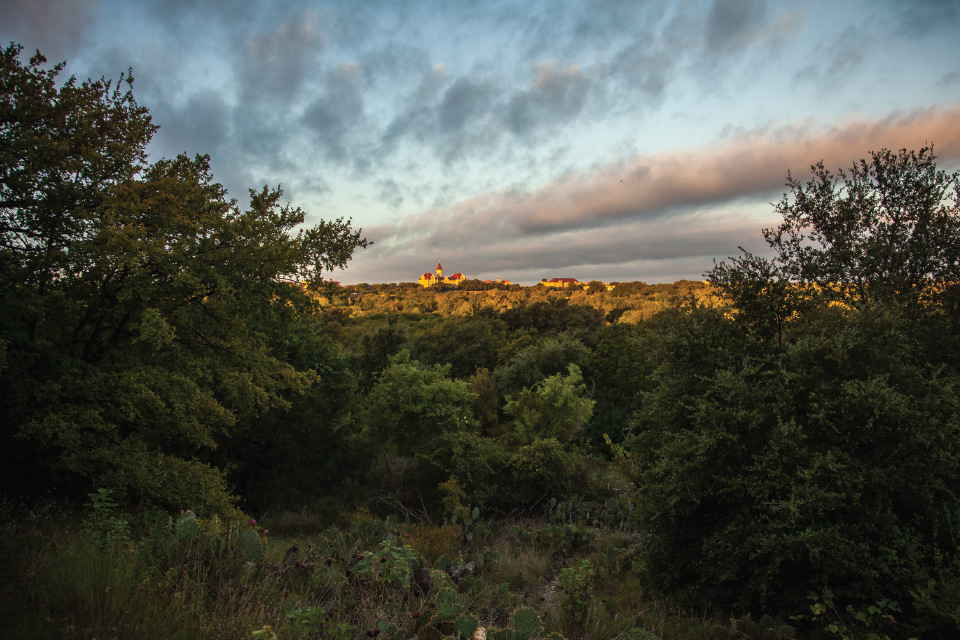Discover! – Blunn Creek Preserve

It’s easy to miss the Blunn Creek Preserve; there’s only street parking at the trailhead on St. Edwards Drive or Long Bow, and signage is unobtrusive. Once inside the preserve, it’s easy to forget the surrounding city.
A preserve is different from a park. Preserve land has been purchased and set aside because it features some unique natural feature or special ecosystem, and improvements are minimal. This 38-acre preserve includes the Blunn Creek watershed and unique volcanic rock formations. Coyotes are present; as a result, dogs are not allowed in the preserve (bikes are also excluded). Hours are dusk to dawn.
In the 1940s and ’50s, a large part of the preserve was a dairy farm. Over the years, invasive plant species have encroached, choking out the natural fauna. Jerry Levenson (aka “The Ligustrum Liqudator”), a dedicated worker at the preserve, explained that a unique partnership between many groups and a small army of volunteers is toiling to remove the invasive species and restore the Blunn Creek land to its original varied ecosystem. The piles of brush along the trails are made up of ligustrum to be chipped; the mulch spread on the pathway is made from these wood chips. Rene Barrerra with the Austin Nature Preserves Management said, “We are very fortunate to have dedicated volunteers like Jerry Levenson and the Blunn Creek Partnership. They assist us with organizing stewardship projects that focus on removing invasive species and—equally important—planting natives back into the ecosystem.”
Trails are marked with metal poles at cross points. Take the Creek Trail down to cross Blunn Creek. Look for the huge live oak, estimated to be some 470 years old. Climb upward to take advantage of the scenic overlooks, which are actually the tops of ancient volcanoes that erupted 75 million years ago and covered the area in ash. One of the overlooks provides a spectacular view of St. Edward’s University, while another gives a scenic look at downtown Austin.
Pathways are clear but terrain can be rocky and is not suitable for strollers. The amount of water in the creek affects crossings, so be careful following a heavy rain. In the spring, bluebonnets can be breathtaking; prickly pear cacti make spectacular showings in the fall when the fruit is ripe. Look for native Texas persimmons as well—one of the area’s largest persimmon trees is located near the St. Edward’s Drive trailhead.
To learn more about how you can help volunteer at Blunn Creek Preserve (or any other Austin-area preserve), visit austintexas.gov/department/volunteer-austin-parks-and-recreation, call 512-974-9461, or email rene.barrerra@austintexas.gov






